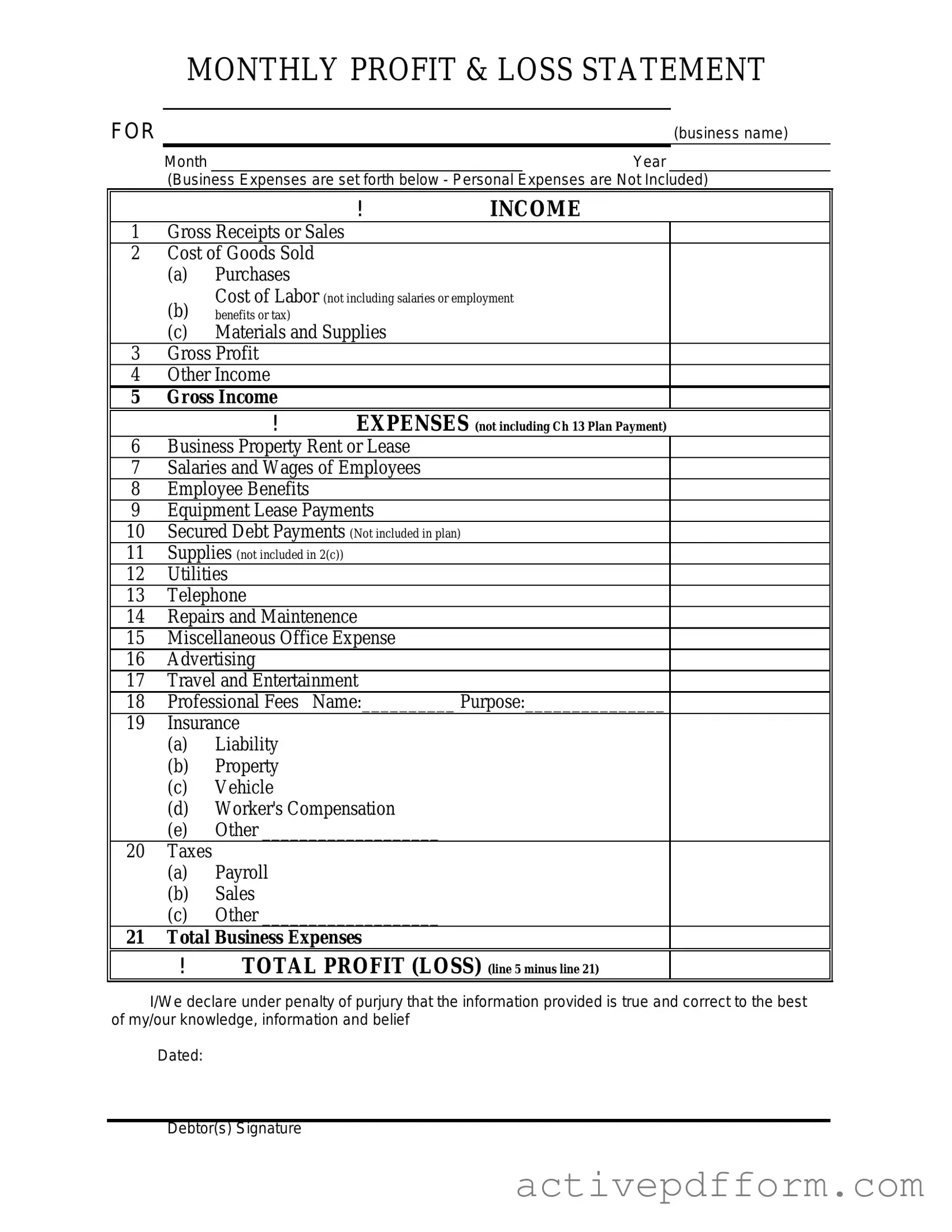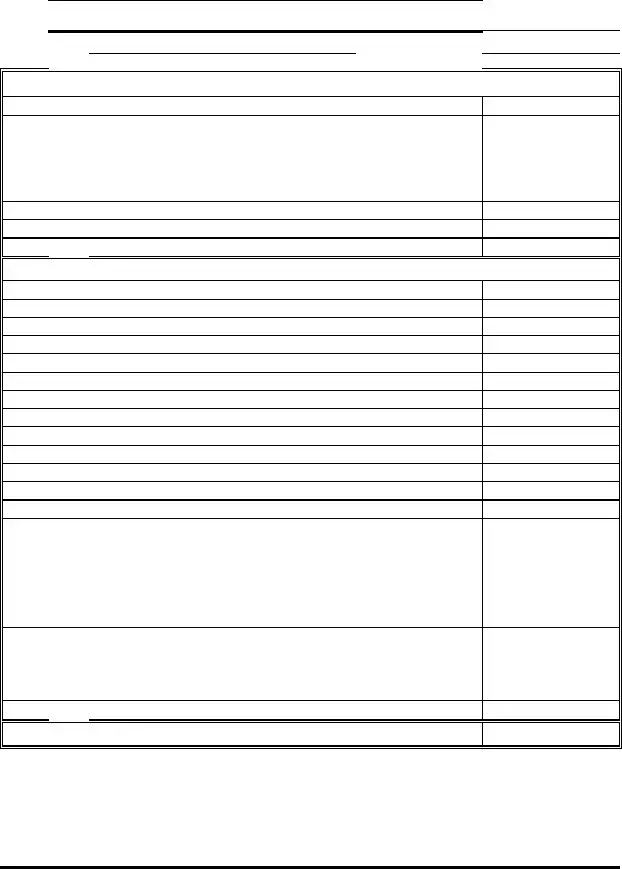What is a Profit and Loss form?
A Profit and Loss form, often referred to as a P&L statement, summarizes a company's revenues, costs, and expenses over a specific period. This document helps businesses understand their financial performance by showing whether they made a profit or incurred a loss during that time frame.
Why is the Profit and Loss form important?
The Profit and Loss form is crucial for several reasons. It provides a clear picture of a company's financial health, helps in making informed business decisions, and is often required for tax purposes. Investors and creditors also rely on this document to assess a company's profitability and sustainability.
How often should a Profit and Loss form be prepared?
Typically, businesses prepare a Profit and Loss form on a monthly, quarterly, or annual basis. The frequency depends on the size of the business and its specific needs. Regularly updating this form allows for timely insights into financial performance and helps in adjusting strategies as necessary.
What key components are included in a Profit and Loss form?
A standard Profit and Loss form includes several key components: total revenue, cost of goods sold (COGS), gross profit, operating expenses, and net profit or loss. Each section provides essential insights into different aspects of financial performance, helping stakeholders understand where money is being made or lost.
How can I use the Profit and Loss form to improve my business?
You can use the Profit and Loss form to identify trends in revenue and expenses. By analyzing this data, you can pinpoint areas where costs can be reduced or where sales can be increased. This insight can lead to more strategic planning and better resource allocation.
Is the Profit and Loss form the same as a balance sheet?
No, the Profit and Loss form and balance sheet serve different purposes. While the P&L statement shows a company's financial performance over a specific period, the balance sheet provides a snapshot of a company's assets, liabilities, and equity at a particular point in time. Both documents are essential for a comprehensive understanding of a business's financial status.

